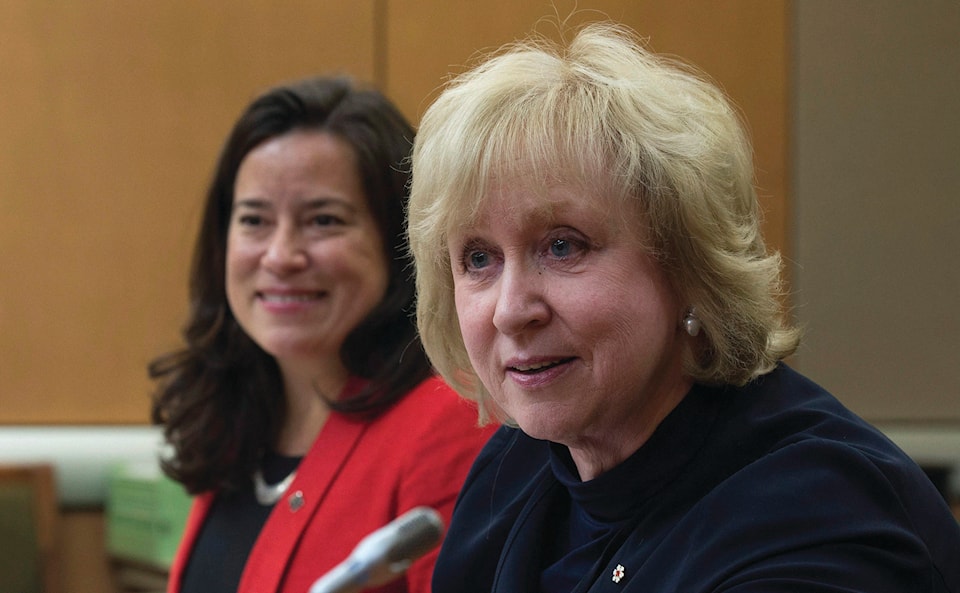By Bruce Cameron
The contentious technique of predictive seat modelling is used in political campaigns to overlay aggregated polling data from numerous sources onto the electoral map of Canada.
Just like polling, with its famous “margin of error” caveat, seat modelling is an imprecise undertaking. But that doesn’t stop people from using it to hazard a guess at what Parliament will look like on Oct. 22.
In most predictive models, which incorporate multiple poll results woven together with historic voting patterns, B.C.’s 42 seats could prove the decisive factor in determining which party forms government.
The current models reflect the tight polling numbers, with a range of outcomes from a small Liberal majority to a Conservative minority.
Despite a virtual tie in overall popular vote intention recently, the way the votes are distributed gives the edge to the Liberals in vote-rich areas like greater Montreal and Toronto.
But with 338 seats in the balance, there is a big margin for error. The 2019 election is so close at this point that most pollsters are now busy trying to project the turnout rate among different groups of voters. Why?
A former colleague of mine, Darrel Bricker, now CEO of Ipsos Public Affairs, oversees election predictions in dozens of countries around the world.
“With so many seats so close, it will come down to getting a precise read on who is going to turn out and who isn’t. Especially by party. None of the models do this,” Bricker said.
Looking back at the 2015 federal election, the Liberals benefited greatly by a surge in turnout, especially among younger voters who do not traditionally vote in big numbers.
In 2019, the Conservatives could benefit if the turnout rate drops because their core voters are believed to be more motivated to get out to the polls.
Many elections ago, when I worked at the Angus Reid Group with Darrel Bricker, and seat projection modelling was in its infancy, most pollsters and campaign professionals relied more on experience than on sophisticated data analysis.
The Angus Reid slogan at the time summed it up: “Matching science with insight.” The organization worked diligently in the early 1990s to try various approaches to the problem.
Near the end of a long and brutal campaign for the Progressive Conservatives in 1993 (led by Kim Campbell at the time), our analytics team came up with the first predicted seat total by party based on dozens of polls we had conducted.
One week before the election, the polls were showing the PCs tanking – victims of their own terrible campaigning epitomized by Campbell quip that “an election is not the time to discuss serious issues.”
Those weren’t the party’s only self-inflicted wounds. The splintering of PC votes to the upstart Reform Party had a dramatic impact as well, with Preston Manning’s new movement poised to pick up a swath of seats in Western Canada. Meanwhile, the Bloc Quebecois, led by the charismatic Lucien Bouchard, was cutting into the Quebec base of PC support.
As Angus Reid Group’s senior management team gathered for discussion and libations in a hotel room at the Chateau Laurier in Ottawa that October, our senior data analyst revealed the output from his team’s months-long modelling work.
We all felt confident that our data, showing the Liberals under Jean Chretien surging and the Progressive Conservatives under Campbell tanking, would suggest a Liberal victory, likely with a strong Conservative opposition. After all, for the previous eight years, Brian Mulroney had led two large majority PC governments.
But our first prototypical model in October 1993 predicted a grand total of three PC seats. Three.
We all sat there at a loss for words. There was no way we were going to go public with a seat projection model that called for three PC seats, especially since the previous PC government had 156 Members of Parliament.
One week later, on election night, we realized we had erred on the side of caution. Yes, Chretien clawed and scraped his way to a Liberal majority. And for the first and only time in Canada’s history, a separatist party, the Bloc Quebecois, became the Official Opposition.
But the real shocker that night was the Progressive Conservatives being reduced to only two seats. Our model, much maligned internally, was accurate after all.
Fast forward to 2019 and one thing is clear: The outcome on Oct. 21 remains too close to call. But like a quarter century ago, the prospect of the Bloc Quebecois holding the balance of power on Oct. 22 remains a real possibility.
Bruce Cameron, Black Press Media’s polling analyst, is the founder of Return On Insight. Follow him on Twitter @roitweets
